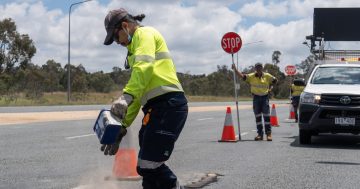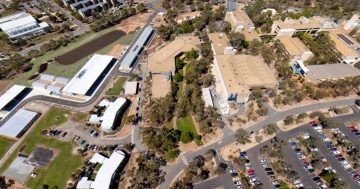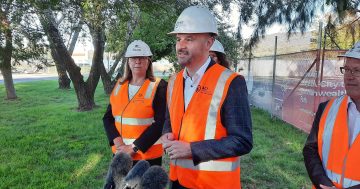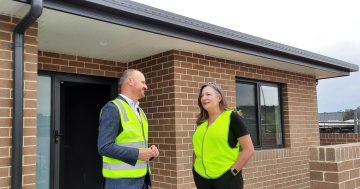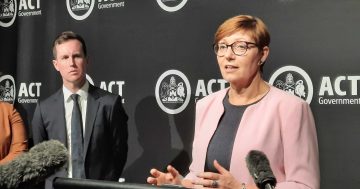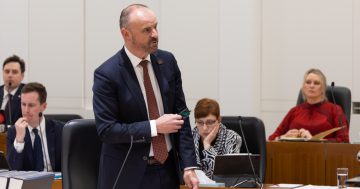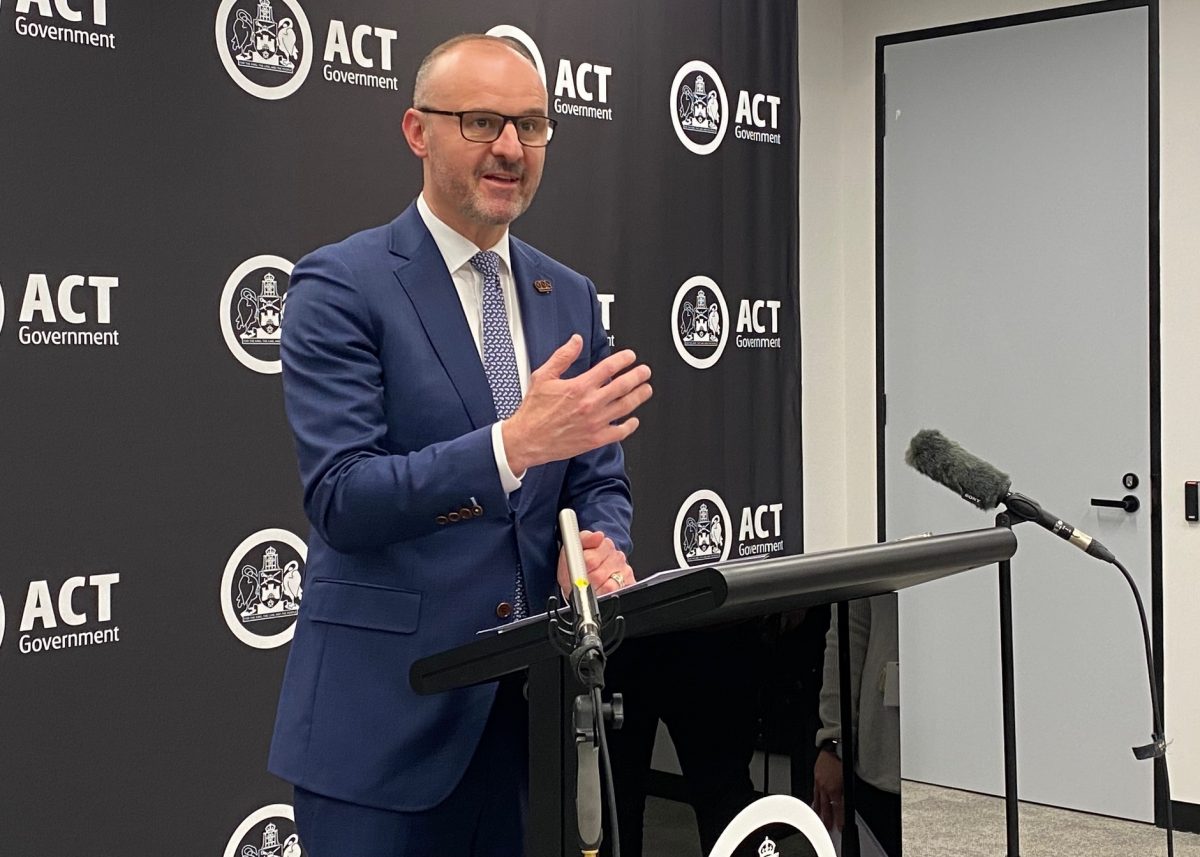
Treasurer Andrew Barr is confident the Territory will reach its new goal of 300,000 jobs by 2030 ahead of schedule. Photo: Claire Fenwicke.
The ACT Government has set itself a new target of at least 300,000 jobs in the Capital by 2030, but whether that will translate to more positions in outer suburbs remains up in the air.
The lack of guarantee the jobs will spread across Canberra’s districts, particularly to Gungahlin, has led one ACT Greens MLA to label the jobs target as “undercooked”.
Recent data from the ABS shows the total number of people employed in the Territory sits at around 265,000, making the government confident it can add another 35,000 jobs by the end of the decade.
Treasurer Andrew Barr told budget estimate hearings he was optimistic this goal could be reached before 2030, given its previous target of 250,000 jobs by 2025 was reached two years early.
“[We’ve] set what we believe is a realistic target … it assumes an employment growth of between 1.5 and 2 per cent each year, which is largely consistent with the forecasts in this budget,” he said.
“If our economy continues to grow strongly, it may be achievable earlier.”
Mr Barr outlined that Commonwealth employment in Canberra accounted for about one in four jobs, which in turn supported other public and private sector employment.
While Territory government jobs represent about 10 per cent of employment across local and state-government equivalent services.
“So we anticipate as our population grows that there will be increased demand for a range of services – public health, public education for example – and so we also would be increasing our employment levels over that period as well,” Mr Barr said.
“So I expect the jobs growth to come from the Australian Government, Territory government – particularly higher education, hospitality, tourism, the care economy, professional, scientific and technical services being large areas of employment growth.”
The construction industry is also expected to be a strong employer, through more housing and public works infrastructure, as well as a result of the newly announced National Capital Investment Framework between the ACT Government and the Federal Government.
The ACT tends to have a lower unemployment rate and a higher workforce participation rate compared to other jurisdictions, and ABS data shows the Territory has more job vacancies than unemployed people, pointing to ‘full employment’ in Canberra.
However, Mr Barr acknowledged there would always be a “level of frictional or transitional unemployment”, given the available jobs don’t necessarily match the skills of people looking for work.
“There’s clearly a skills mismatch in our economy … so that places a very strong emphasis on [the need for] education and training opportunities,” he said.
Mr Barr was questioned over whether this jobs target would translate into more employment opportunities away from the city’s centre.
He said growth was expected in all areas of the ACT, but the question was dependent on the extent of that growth and in which areas.
The ACT government has employment bases in each town centre, while public jobs such as healthcare and education are largely dispersed throughout the Territory.
Private sector employment is somewhat more concentrated in medium and large-scale enterprises, including industrial areas.
“At the moment around half of the employment in the ACT is in central Canberra – by that I mean the CBD and the Parliamentary Triangle,” he said.
“That is unlikely to change significantly, I would not anticipate there being significant movement of jobs out of that area elsewhere.
“Ultimately the decisions that the ACT Government has the most control over are where we locate our own employment. We also have some enabling capability as it comes to land release to support private sector employment, and we have a lobbying capability as it relates to Commonwealth employment.”
Greens MLA for Yerrabi Andrew Braddock has slammed the jobs target for failing to address the specific needs of Canberra’s districts, including Gungahlin.
“Gungahlin is more than just a dormitory for civic and parliamentary triangle workers,” he said.
“As the first town centre since self-government, development in Gungahlin just hasn’t brought the same economic opportunities found elsewhere in this city.”
Mr Braddock had previously moved a motion in the Legislative Assembly calling for district-specific employment targets, and their inclusion in the city’s economic development strategy.
This was supported across the Assembly.
Mr Braddock said this “vague territory-wide” jobs target was another example of why specific district strategies were needed.
“For all the talk about economic development, we’re not seeing the results close to where people live,” he said.
“We need to recognise that different parts of Canberra have different needs, and clearly present the associated opportunities in our districts.
“A blanket target of 300,000 won’t cut it.”












